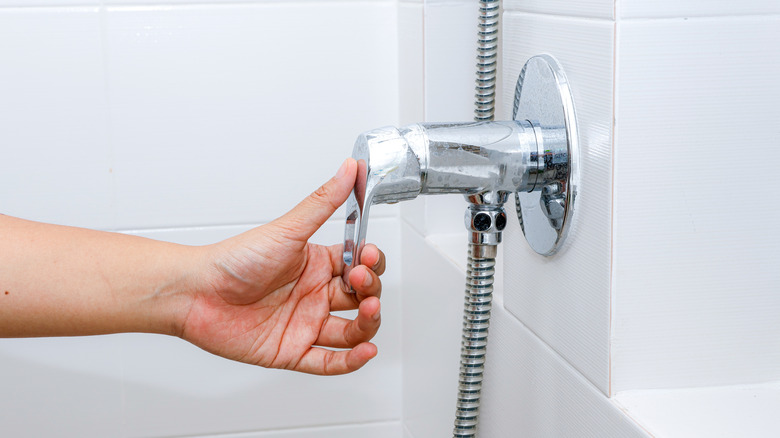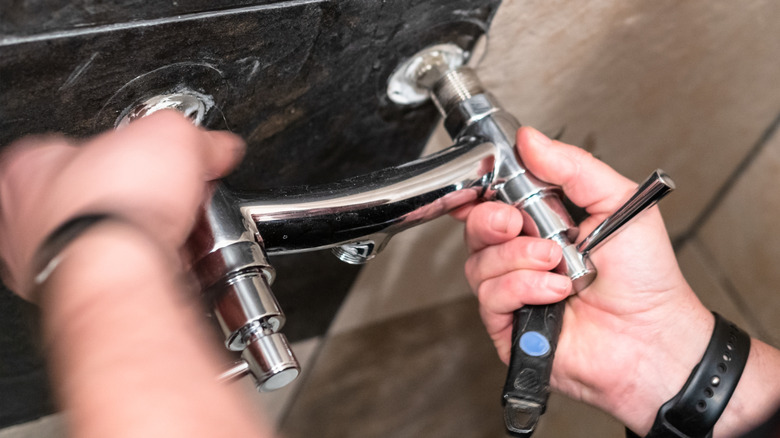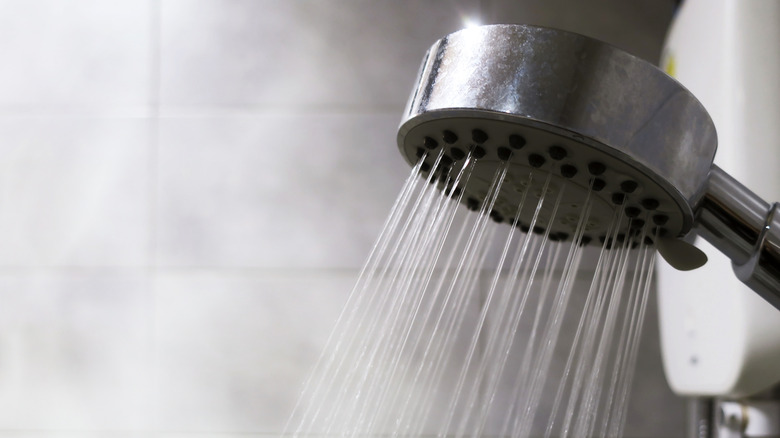How To Check (& Fix) The Anti-Scald Device In Your Shower
You're enjoying a long, hot shower at home when someone suddenly flushes the toilet in another bathroom, and your water goes from a perfectly soothing temperature to a boiling jet. The culprit here is often a faulty or wrongly adjusted anti-scald valve. When somebody flushes a toilet while the shower is running, most of the cold water is directed to the toilet instead of the shower, throwing off the balance of hot and cold. The same thing happens when somebody starts running hot water in the kitchen, turning your shower cold.
Anti-scald devices work by detecting these sudden changes in the water's temperature or pressure (or both) and adjusting accordingly. If your anti-scald device is set correctly and working properly, it should ensure that the shower temperature remains stable, with no sudden cold or hot spikes, regardless of water usage elsewhere in the house.
Luckily, adjusting most anti-scald devices is relatively simple. You'll just need to unscrew and open up the valve, then rotate the device to set the desired temperature. Repairing a faulty anti-scald device can be a bit more complex, potentially requiring a plumber.
Adjusting and repairing your anti-scald valve
First and foremost, locate the anti-scald device. You'll likely find it built into the shower's temperature valve. In some homes, it's installed near the water heater instead, stabilizing the water in the entire home. To confirm the temperature the device is set to, open up the valve by removing the cap and unscrewing the handle. Once exposed, the device can be rotated to set the default temperature.
If you've tried adjusting your anti-scald device, yet problems with the water temperature persist, it may be faulty. Some indicators of a broken anti-scald valve include frequent or sudden fluctuations in temperature, low water pressure, and fussy temperature adjustments. Before undertaking repairs, confirm that other taps around the house are not experiencing the same issues. If they are, the valve may not be the problem, and you'll want to inspect the water heater or tank instead. If you strongly suspect your anti-scald device is the culprit, the issue may be a faulty pressure balancer diaphragm or a cartridge needing replacement.
If you're comfortable undertaking plumbing repairs yourself, locate the model of your particular anti-scald device and find a tutorial on YouTube to fix it. Keep in mind that every home has its unique piping quirks, so a tutorial may not match your setup exactly. If you don't feel confident going the DIY route, it may be a sign you need to call a plumber for the job.
Why you need an anti-scald device
Beyond just being able to troubleshoot a lack of hot water in your shower, there is another reason an anti-scald valve is essential, and why you should ensure it's working properly at all times: safety. Some people, including older adults, may have reduced sensitivity to heat. This can increase the risk of accidental scalding in the shower before they realize the water is too hot. Children are similarly at risk due to thinner skin that can burn more easily.
If you don't have an anti-scald valve, or yours is faulty beyond repair, it may be time to install a new one. A pressure-balanced anti-scald valve tends to be more affordable, usually coming in under $100, with the caveat that it keeps the water temperature less stable. A thermostatic valve, which often costs over $200 but offers more temperature stability, could be a good investment if you can spare the cash. However, many plumbers and homeowners find that a pressure-balanced anti-scald device meets their needs just fine.


